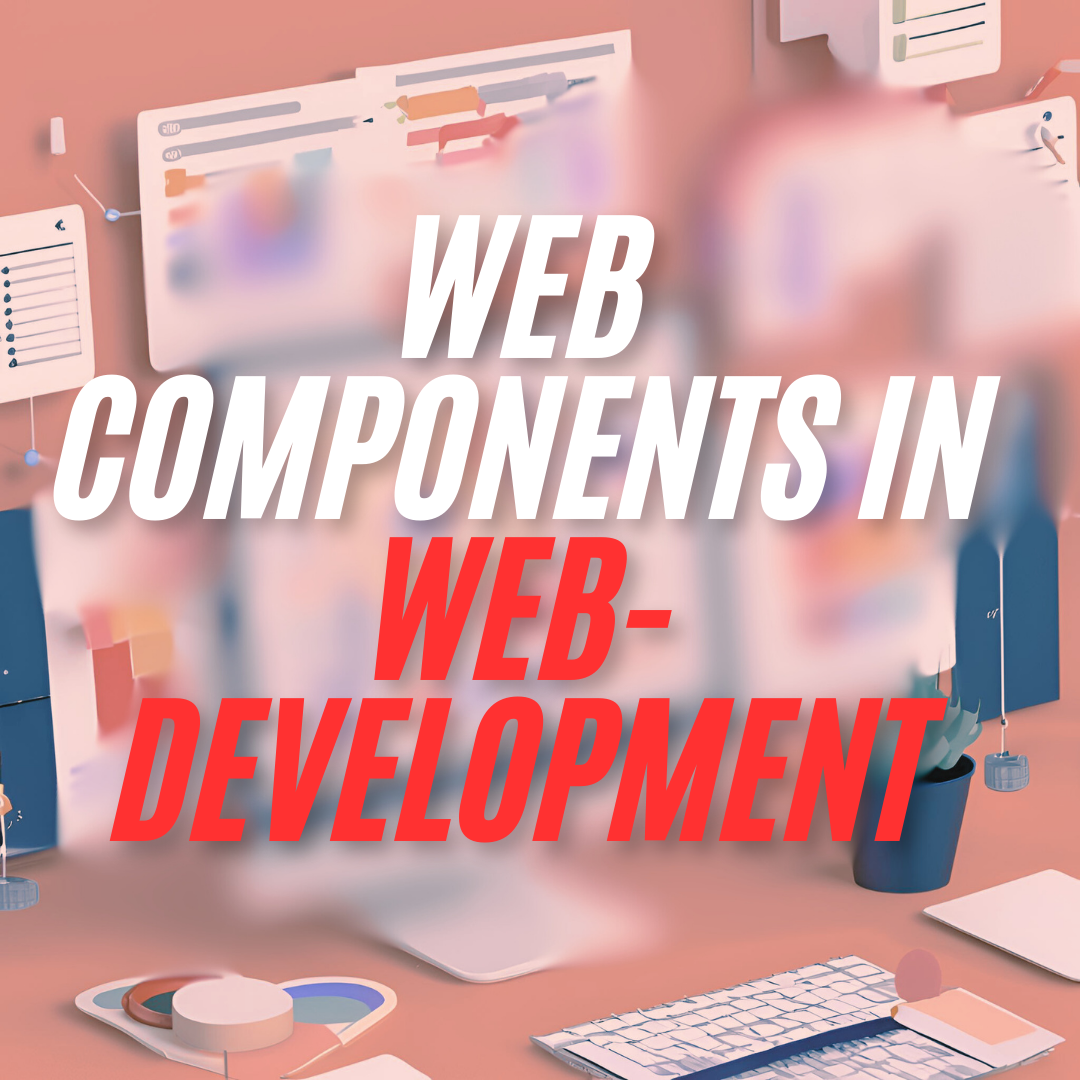Web Perfomance
Optimizing Web Performance with Modern Techniques
 Quest Lab Team
Quest Lab Team
1. Understanding Core Web Vitals
Core Web Vitals are a set of standardized metrics defined by Google to measure key aspects of user experience. These metrics—Largest Contentful Paint (LCP), First Input Delay (FID), and Cumulative Layout Shift (CLS)—play a vital role in determining how a page performs from the user's perspective. Each of these metrics highlights specific issues that can hinder a website’s usability, making them essential for modern web development.
- Largest Contentful Paint (LCP): Measures loading performance. To provide a good user experience, LCP should occur within 2.5 seconds of when the page first starts loading.
- First Input Delay (FID): Measures interactivity. Pages should have an FID of less than 100 milliseconds.
- Cumulative Layout Shift (CLS): Measures visual stability. Pages should maintain a CLS of less than 0.1 to avoid unexpected shifts.
Optimizing these metrics requires a holistic approach that encompasses various aspects of web development, from server response times to front-end code efficiency. Let's explore how each of these metrics can be optimized to enhance overall performance.
2. Reducing Largest Contentful Paint (LCP)
Largest Contentful Paint (LCP) represents the time it takes for the main content of a page to load. Achieving a low LCP score is crucial for reducing load times and improving user satisfaction. Here are several strategies to optimize LCP effectively:
2.1. Optimizing Server Response Times
The speed at which a server responds to requests significantly impacts LCP. Using techniques like server-side rendering (SSR), caching, and minimizing server processing can drastically reduce response times. Hosting static assets on a Content Delivery Network (CDN) further enhances speed by serving files from locations close to the user.
2.2. Image Optimization Techniques
Images are often the largest elements on a page, directly influencing LCP. Optimizing images by using formats like WebP, adjusting sizes, and employing lazy loading techniques ensures that only visible images load initially, reducing the time needed for the page to appear complete.
"Lazy loading can improve perceived load times significantly by deferring the loading of images until they are in view, enhancing both LCP and the user experience."
2.3. Minifying and Compressing Files
Minification and compression reduce file sizes, improving LCP by ensuring faster download times. Tools like Gzip and Brotli compress files efficiently, while minification removes unnecessary characters from HTML, CSS, and JavaScript.
3. Reducing First Input Delay (FID)
First Input Delay (FID) measures the time it takes for a page to respond to a user’s first interaction, such as clicking a button or typing into a field. Improving FID is essential for creating responsive interfaces, especially on mobile devices. Here are several techniques to reduce FID:
3.1. Minimizing JavaScript Execution
Excessive JavaScript execution can block the main thread, delaying the time it takes to respond to user inputs. Splitting code into smaller, asynchronous chunks (e.g., using Web Workers or implementing lazy loading for JavaScript) helps avoid blocking the thread, reducing FID.
- Code Splitting: Breaking code into smaller bundles ensures that only the necessary parts load initially, improving interaction speed.
- Deferring Non-Critical JS: Scripts not required for immediate functionality should be deferred to reduce blocking time.
3.2. Leveraging Browser Caching
Caching allows frequently accessed resources to be stored locally, reducing the need for repeated downloads. Proper caching strategies, such as defining expiration headers, allow content to load faster on subsequent visits, enhancing FID and overall performance.
4. Enhancing Cumulative Layout Shift (CLS)
Cumulative Layout Shift (CLS) measures visual stability, quantifying how much elements on a page unexpectedly shift during loading. To improve CLS, developers can adopt various strategies that ensure elements load predictably and don’t disrupt user interactions.
4.1. Setting Size Attributes for Media
By defining width and height attributes for images and videos, the browser allocates space for these elements before they load, preventing unexpected shifts. Using CSS aspect ratio boxes for responsive design can also minimize layout shifts.
4.2. Using CSS to Ensure Stability
CSS rules, such as Flexbox and Grid, offer more stable layouts, avoiding shifts caused by unpredictable HTML structures. Animations can also cause shifts; using transform properties instead of properties like 'top' or 'left' helps prevent CLS.
Additional CSS Techniques
The following CSS techniques help improve CLS by managing layout shifts smoothly:
- Using sticky positioning sparingly to avoid reflows.
- Preferring relative units (e.g., em, rem) over fixed units to support adaptive resizing.
5. Implementing Advanced Performance Techniques
Once foundational optimizations are in place, advanced techniques like preloading, server-side rendering, and content delivery networks (CDNs) can take performance to the next level. Combining these approaches provides an experience that not only meets but exceeds user expectations.
Using Server-Side Rendering (SSR)
SSR pre-renders content on the server before delivering it to the client, reducing load times and improving SEO. This approach benefits dynamic content sites, allowing faster initial rendering for users.
Leveraging Edge Computing and CDNs
Edge computing and CDNs bring content closer to users by caching data across a distributed network of servers. CDNs, such as Cloudflare and Fastly, enhance performance by reducing the distance between users and servers, thereby reducing latency and improving Core Web Vitals.
6. Monitoring and Iterative Improvement
Continuous monitoring and iterative optimization are critical for maintaining high performance. Tools like Google Lighthouse, PageSpeed Insights, and WebPageTest provide insights into Core Web Vitals and help identify areas for improvement.
- Regular Audits: Frequent audits allow developers to track performance metrics over time.
- Real User Monitoring (RUM): RUM tools collect real-time data from users, providing a comprehensive view of website performance in the field.
With consistent testing, developers can stay ahead of performance issues, ensuring that their site continues to provide an optimal experience. As technology and user expectations evolve, so should the approaches we take in web performance optimization.
7. Case Studies: How Industry Leaders Optimize Performance
To truly understand the impact of performance optimization, let’s look at real-world case studies from industry giants. Companies like Airbnb, Pinterest, and Netflix have demonstrated how targeted performance improvements can significantly enhance user experience and engagement.
Airbnb's Approach to Lazy Loading
Airbnb implemented lazy loading on their main site to reduce the initial load time and optimize LCP. This approach meant that only the images visible in the user's viewport loaded first, while others loaded progressively as the user scrolled down the page. By reducing the initial payload, Airbnb saw a 15% improvement in page load time and an increase in overall user engagement. This demonstrates the power of strategic lazy loading in improving both speed and user satisfaction.
Pinterest's Success with Server-Side Rendering
Pinterest faced challenges with JavaScript-heavy content that affected FID and LCP. They adopted Server-Side Rendering (SSR) for key pages, allowing the main content to load directly from the server rather than relying solely on the client. This change led to a 40% reduction in perceived load times and increased organic search traffic by over 15%. The results underscore SSR's effectiveness in improving both interactivity and discoverability, especially for content-driven sites.
Netflix's Use of Edge Caching and Compression
As a media-streaming platform, Netflix needs to deliver massive amounts of data quickly. To achieve this, Netflix relies heavily on edge caching and efficient compression. By placing data caches on edge servers near users, Netflix reduces latency, enhancing video load speeds and reducing buffering. Additionally, they employ the Brotli compression algorithm, which offers higher compression rates than Gzip, saving bandwidth and improving overall performance.
8. Advanced Code Techniques for Optimizing JavaScript and CSS
Beyond lazy loading and SSR, leveraging code optimizations can significantly boost page performance. Writing efficient JavaScript, optimizing CSS, and adopting modular code structures help streamline resources and improve response times.
Debouncing and Throttling
Debouncing and throttling are JavaScript techniques that control the rate at which functions are executed, improving efficiency. Throttling limits the number of times a function is called in a given period, which is particularly useful for scroll and resize events. Debouncing, on the other hand, prevents a function from being called too frequently in rapid succession. Using these techniques can reduce the workload on the main thread and improve FID.
9. Optimizing Fonts for Performance
Fonts can be surprisingly impactful on web performance, especially custom fonts that require additional network requests and render time. Optimizing font loading strategies can help reduce FID and CLS. Here are some effective techniques for handling fonts efficiently:
9.1. Preloading Fonts
By preloading critical fonts, developers can ensure they are loaded early in the rendering process. This technique prevents 'flash of unstyled text' (FOUT), improving visual stability and enhancing user experience.
9.2. Using Font Display Swap
The font-display property controls how fonts render while they’re loading. Setting it to swap allows fallback fonts to be displayed until the custom font is ready, eliminating delays that cause layout shifts.
10. Exploring the Role of Progressive Web Apps (PWAs) in Performance
Progressive Web Apps (PWAs) offer an optimized, app-like experience on the web. PWAs provide offline access, faster load times, and improved interactivity by leveraging service workers, caching, and background sync. Many companies, such as Twitter and Uber, have used PWAs to improve both performance and user engagement dramatically.
10.1. Leveraging Service Workers for Offline Caching
Service workers allow developers to control network requests, enabling offline functionality and faster resource access. By caching assets and routing network requests strategically, service workers can reduce load times and provide a seamless experience, even in areas with poor network coverage.
10.2. Integrating Background Sync for Enhanced Reliability
Background sync is a powerful PWA feature that allows actions (like form submissions) to be queued and completed once the device has a stable internet connection. This feature is essential for ensuring data is reliably saved, even if a user briefly loses connectivity. Uber’s PWA utilizes background sync to provide users with a smooth experience when booking rides, regardless of connection status.
In a world where speed and reliability are paramount, adopting a PWA framework not only improves performance but also enhances user experience, making web applications as responsive and reliable as native apps.
11. Final Thoughts on the Future of Web Performance Optimization
The evolution of web performance optimization is closely linked to advancements in technology, user expectations, and search engine algorithms. As tools and frameworks continue to evolve, so will the strategies to enhance web performance. Techniques like edge computing, machine learning-driven personalization, and progressive frameworks will likely shape the future of optimization, pushing the boundaries of what’s possible on the web.
Ultimately, optimizing web performance is not just a technical endeavor but a commitment to delivering exceptional experiences for users. With a strong foundation in the latest optimization techniques, developers can craft websites that are not only fast and efficient but also engaging and user-centric.
Conclusion
Modern web performance optimization is a blend of art and science, requiring both technical expertise and user-centered thinking. By understanding and applying the latest techniques in performance optimization, developers can create fast, responsive, and stable websites that satisfy users and search engines alike. As Core Web Vitals continue to evolve, staying informed and adaptable is key to maintaining a competitive edge in the digital landscape.

Quest Lab Writer Team
This article was made live by Quest Lab Team of writers and expertise in field of searching and exploring
rich technological content on Web development and its impacts in the modern world



